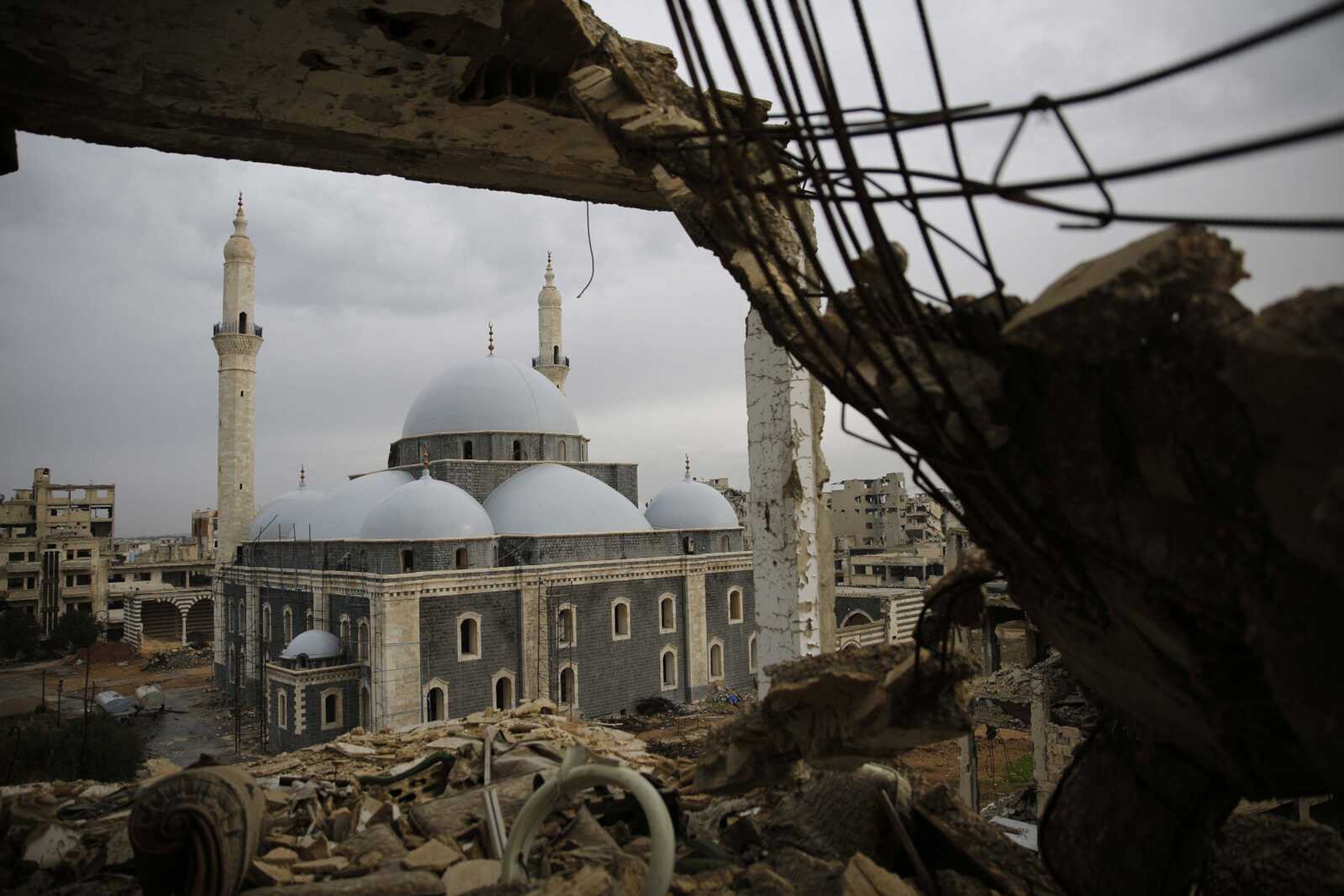Syrian rebel 'capital' mostly abandoned
HOMS, Syria -- Sumaya Bairuty walked through abandoned streets pocked with shell craters amid rows of destroyed buildings, at times climbing over giant sand barriers before reaching her parent's apartment in the once rebel-held district of Bab Dreib in this central Syrian city...
HOMS, Syria -- Sumaya Bairuty walked through abandoned streets pocked with shell craters amid rows of destroyed buildings, at times climbing over giant sand barriers before reaching her parent's apartment in the once rebel-held district of Bab Dreib in this central Syrian city.
The 38-year-old English-language teacher, who works in Damascus, comes to Homs by bus once a week to spend two days with her parents, who live alone in their newly repaired apartment in the heavily destroyed and mostly deserted area.
It has been almost four years since the last rebels and civilians withdrew from strongholds in the ancient heart of Homs in May 2014, surrendering to President Bashar Assad a bloodstained city once dubbed the "capital of the revolution." Few people have returned, and large parts of the once vibrant old city are still abandoned and destroyed, as if time has stood still since the guns fell silent.
For Bairuty's family, the main sorrow remains the loss of her youngest sibling, Rabih, in 2015. He was killed by insurgents in the rebel-held northwestern province of Idlib.
"This was the biggest loss. Neither the house nor the work or any other thing was as painful as losing Rabih," she said.
The family's home in Bab Dreib is in the heart of the former rebel-held districts of Homs. The streets are so shell-pocked and destroyed cars cannot drive, and the nearest area with shops and vehicles is a 20-minute walk away.
Sumaya explained that the family had to change homes eight times since the Syrian conflict erupted seven years ago, after their main home was destroyed.
In 2012, the Bairuty family fled to Damascus after their neighborhood fell into rebel hands. A year later they returned to Homs, renting several homes before moving into the building of Sumaya's maternal grandparents in October 2016, a bit more than two years after government forces recaptured all of central Homs.
After they moved into their latest apartment, the U.N. helped the family fix it up by installing new windows and doors and closing the gaping holes in the walls.
Bairuty's father, Mohammed Riad, said they are lucky to have a home, adding they now get 12 hours of electricity every day and two hours of drinking water. He walks for about half an hour every day to reach the market to buy groceries.
Amid an ongoing civil war, no Western countries have stepped up to help finance Syria's reconstruction. The governorate has renovated the old covered marketplace as well as some of the city's old churches, and the city's famous Khaled bin al-Waleed mosque is undergoing renovation. But most of the neighborhoods are still sprawling ruins.
The residents who have trickled back are using their own money or U.N. assistance to fix their homes just enough to be livable.
Homs Gov. Talal Barazi told The Associated Press that 21,000 families -- 30 percent of Homs city's original population of 1.2 million -- have returned.
Riad said he hopes to find work once reconstruction begins. The 70-year-old was a construction worker for most of his life.
"The situation in general is good but our main problem is that there is no transportation here," he said as he watched the soccer match on an Iraqi channel.
Shilar said she is worried about the future and thinks that even if Homs is rebuilt, reconciliation is a long way off.
"The city needs a lot of effort to be alive again ... It is not only the buildings (that were damaged) but also our souls," she said.
Connect with the Southeast Missourian Newsroom:
For corrections to this story or other insights for the editor, click here. To submit a letter to the editor, click here. To learn about the Southeast Missourian’s AI Policy, click here.









